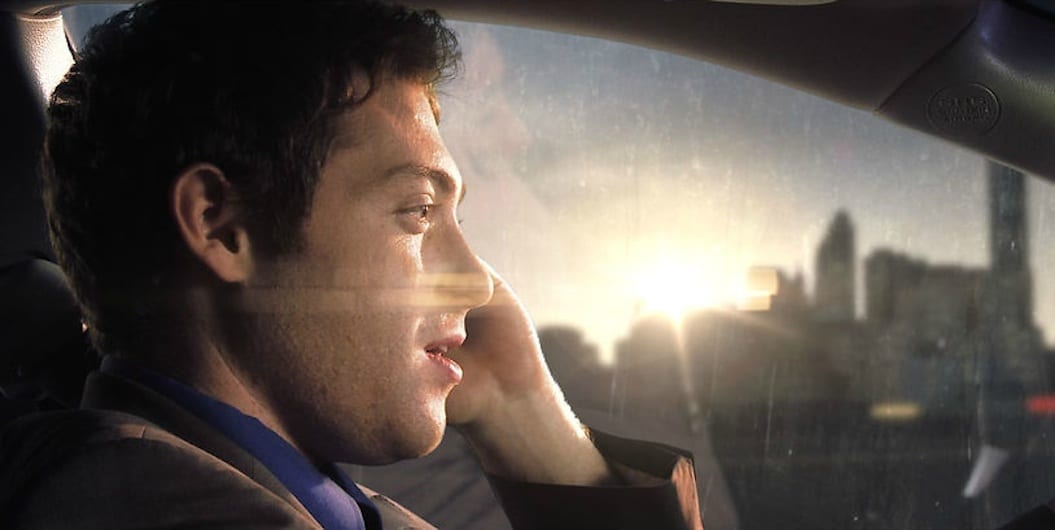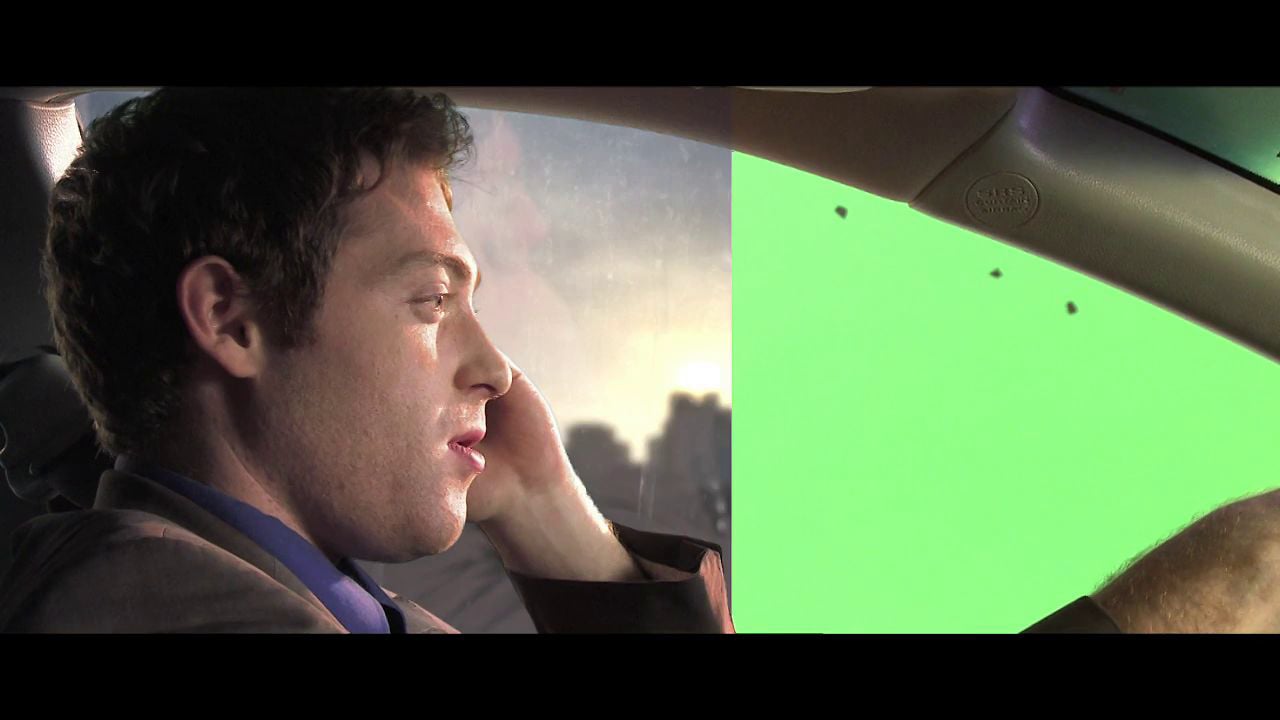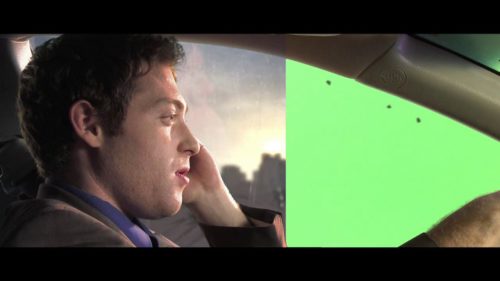Was the idea of parallel universes of the everyday frustrations and pettiness of life versus something hugely catastrophic playing around in your mind for sometime before you wrote the narrative?
I had wanted to make a film in this style for quite some time. I had originally written a scene for another film in which a character is on the phone while driving. It was just some small conversation about a relationship, but with things happening outside the window.
While working on the script, I saw a programme on Discovery Channel about the crash of the Concord back in July of 2000. There is only one piece of footage of the Concord accident, and it shows the plane in flames, filmed from a car on the highway. It suddenly struck me that, on any typical highway drive, we are passing hundreds of events, big and small, at any given moment. We are so focused on the task at hand – operating the vehicle, talking on the phone, surfing the radio – that we could miss gigantic events as we whizz by in our cars. We could miss amazing things, or terrible things, and that might have consequences on our lives.
I also noticed a trend among my friends. They were increasingly entranced by their smartphones, and tied into the world in a way they never had been before. But because of this constant absorption, maybe they were missing the bigger picture. Maybe we are all so absorbed by our cars, our phones, our flight times, that we could even miss the world coming to an end…and that is what I ended up writing my film about.
Did you write the narrative yourself – and had you always planned to shoot the film the way you did with green screen?
I wrote the film over the course of a few months, and had always planned to shoot green screen. Executing the film in the real world would have been incredibly daunting, so the film was written with the technique in mind.
Apart from the simple but stunning visuals, Blind Spot is dialogue driven. How did you develop this skill?
I’ve never considered myself a gifted dialogue writer, so I was pleased to discover that the writing rang true with a lot of viewers. I wrote the protagonist’s dialogue the way I would speak in that situation, and tried to keep the Customer Service Reps cold and detached. I think we’ve all felt sarcastic and incredulous when faced with customer service people, so I wanted the audience to empathize with Steven, while at the same time, condemning him for not paying more attention to his surroundings.
Fabulous acting, how did you cast the lead?
Brandon is an old friend of mine, and I had worked on a few films with him before, but never as a director. I always wanted to cast him in my own film, so this seemed like a great excuse.
What were the main challenges and how did you overcome them?
Creating a realistic city entirely in CGI was quite a challenge on a minimal budget, but the greatest challenge was in the amount of time we spent working on the film. It only took eight hours to film, but over eight months to complete the FX work. We were working on our own computers on weekends, and we had to design, build and composite the entire film around other, paid projects. Over those eight months, it became difficult to keep an objective eye on the film, and by the end, I really didn’t know if it would work or not.
What makes a true VFX artist as opposed to a VFX technician?
I think a true artist IS a technician. Someone who can solve problems, visualize and conceptualize, and express ideas to others, but a true VFX artist is also a film maker at heart. My effects artist on Blind Spot, Mike Boers is certainly all of those things. He is also an incredibly talented photographer, graphic designer, web developer and is, in general, the smartest person I know.
When I approached him about doing the FX work on Blind Spot, he didn’t hesitate for a second about the scale, the amount of work, and the technical challenges that lay ahead. Since the film was finished, he has confessed that at first he had no idea how we were going to do it, but he set his mind to it, and worked with me, free of charge, for almost eight months to complete the film. He built our city, textured it, lit it, painted our backgrounds, built our traffic systems, composted the entire film, and did it MOSTLY with a smile on his face…I owe Mike a few big favours.
Was it a passion film, did you have to call in lots of favours or did you work on it by yourself?
The film was crewed by former classmates. I didn’t ask for a lot of time (the film was shot in 8 hours), but I made sure we had excellent help on set, and my gaffers, grips, AC’s, cast and crew were top-notch. I paid for the expenses out of pocket, and the only people paid were makeup, studio owners and of course, my sound recordist and designer.
Overall, the film cost under $2500 Canadian, but if the effects work hadn’t been completed by Mike and myself, it would have been at least four or five times that amount. We both put a lot of hours in front of a computer to complete the project. We always wanted to add more and more, but eventually we just had to call it ‘done’.
What’s program and kit did you use?
I have never thought specific software was all that important and similar results could be achieved using a variety of programs. That said, we did the bulk of our 3D work in Blender 3D (which is a free 3D program available online) and Houdini, which offers a wonderful Apprentice license for little money. Our compositing was achieved in a variety of programs, with some being in Nuke (which we obtained access to from a generous friend), while the majority was done in Adobe After Effects CS4.
A potted history please of what led you to directing.
I spent my youth learning about the visual effects greats like Willis O’Brien, Ray Harryhousen and Stan Winston. Films like The Terminator, Aliens, King Kong and Jurassic Park played on a grand scale to a young boy like myself, and I was fascinated by the technology used to fool audiences into believing these fantastical stories. I taught myself about CGI, model making and matte painting from any books I could get my hands on. It was great fun… but I found myself becoming less interested in the effects work, and becoming much more drawn to storytelling. This led to a love of directing, but also of editing and cinematography. I spent a few years at film school, made a few VFX-free films, but now that I am back on my own, I delight in making shorts which utilize cutting edge effects to tell powerful stories in unique ways.
If you can say, what personal project are you working on now?
I can’t say too much right now, but I am finishing up my next screenplay. It takes place on a much smaller scale, and is mostly a very simple film about a troubled relationship… But before you all start yawning, I promise this film, which is currently titled The Splinter, will still feature stunning CGI and Makeup effects. These techniques will be used to transform the main character into something very strange, and by the end of the film, we’ll be attempting things which make Blind Spot look simple in comparison.
See composite film of Blind Spot in Related Content
LINKS
Matthew K Nayman











